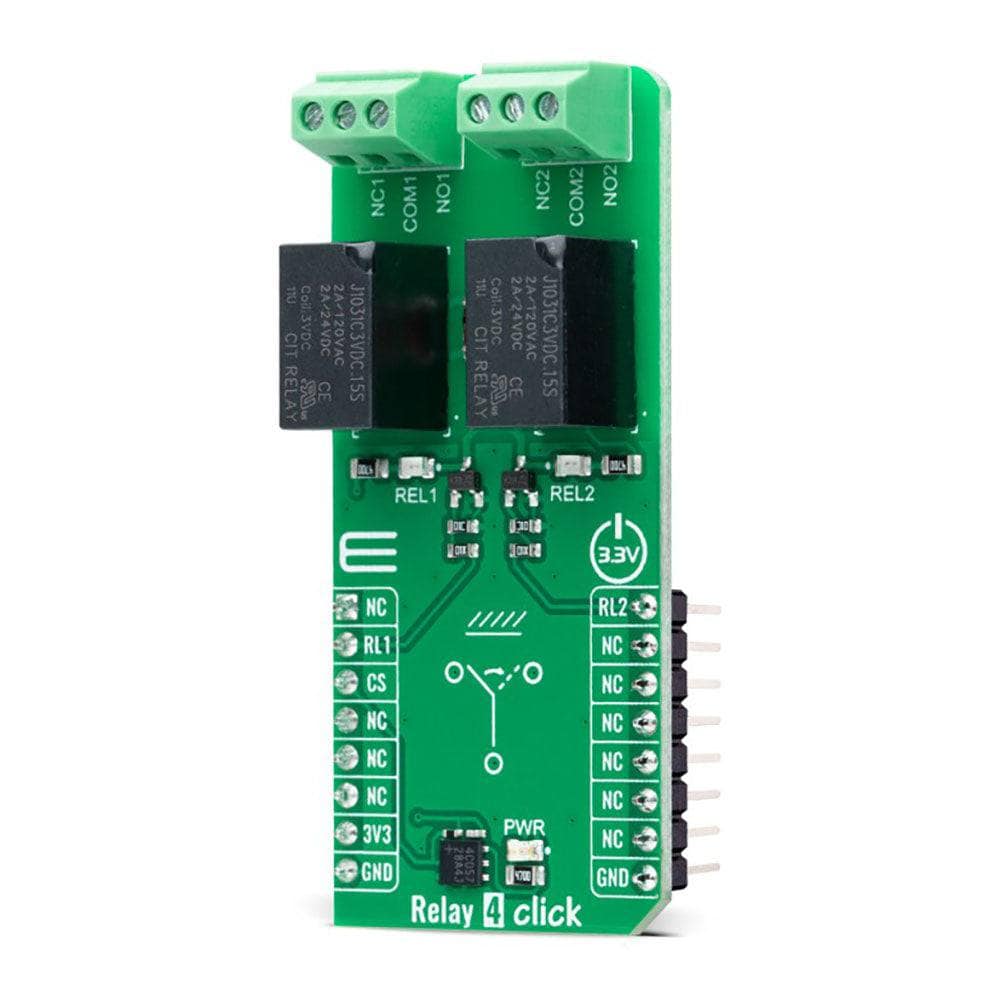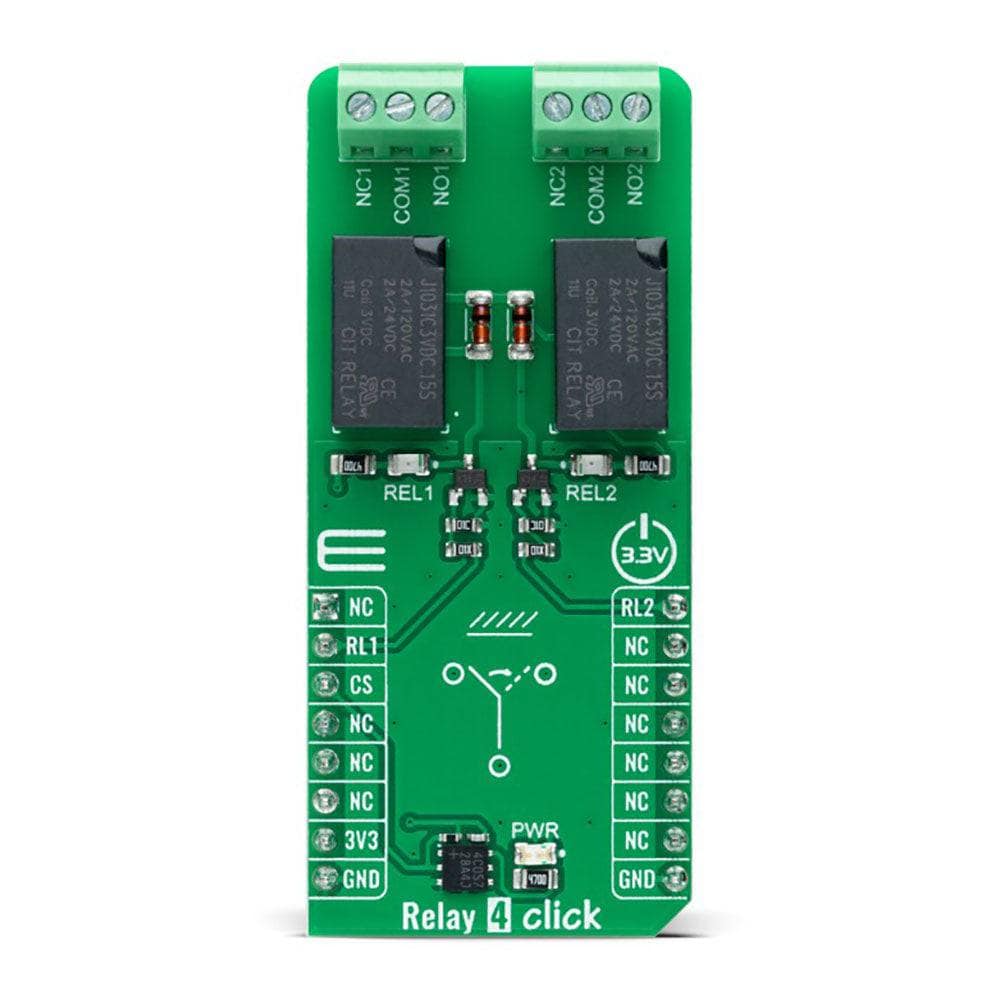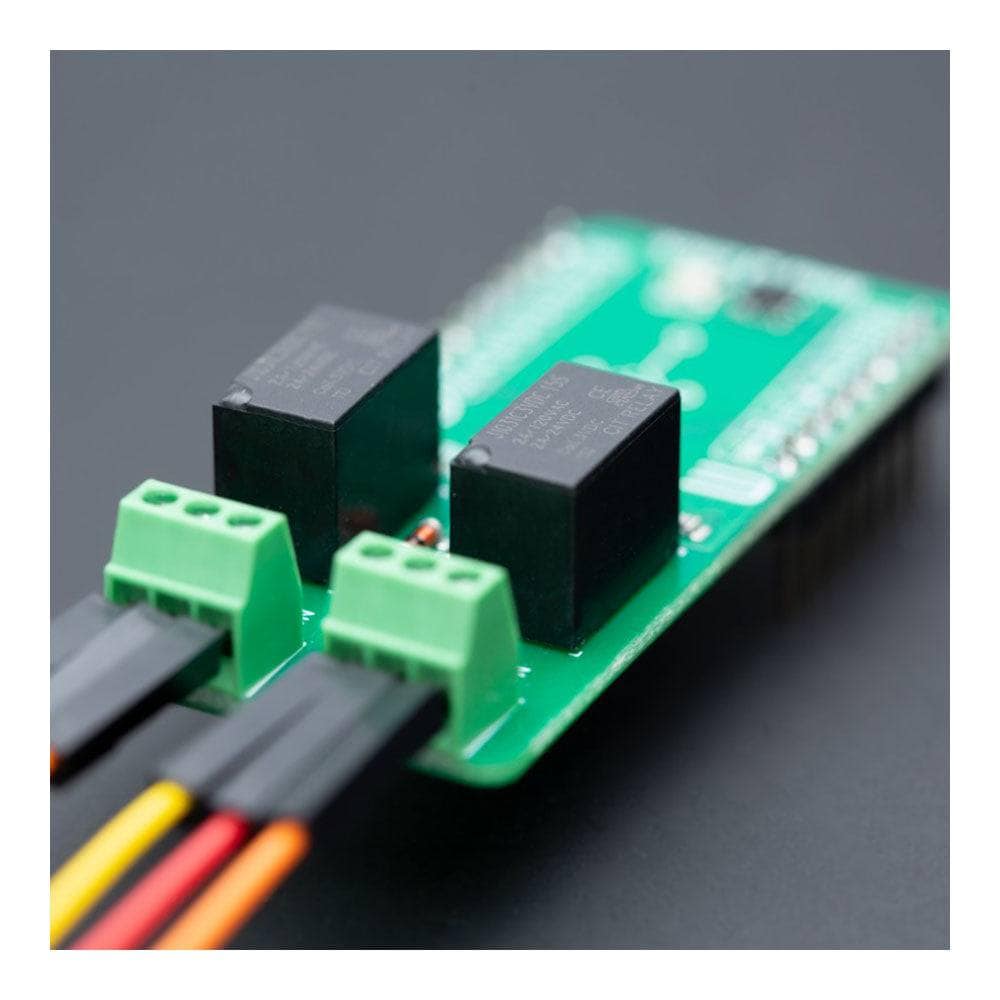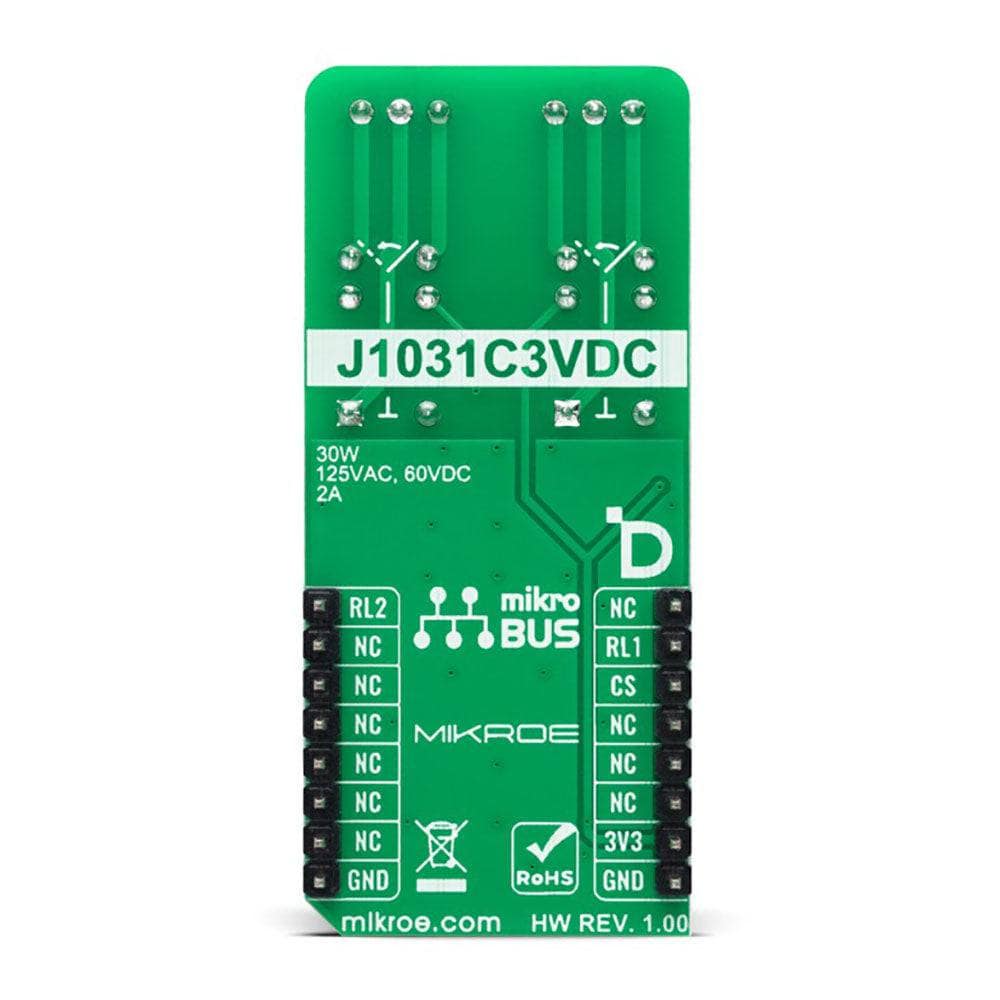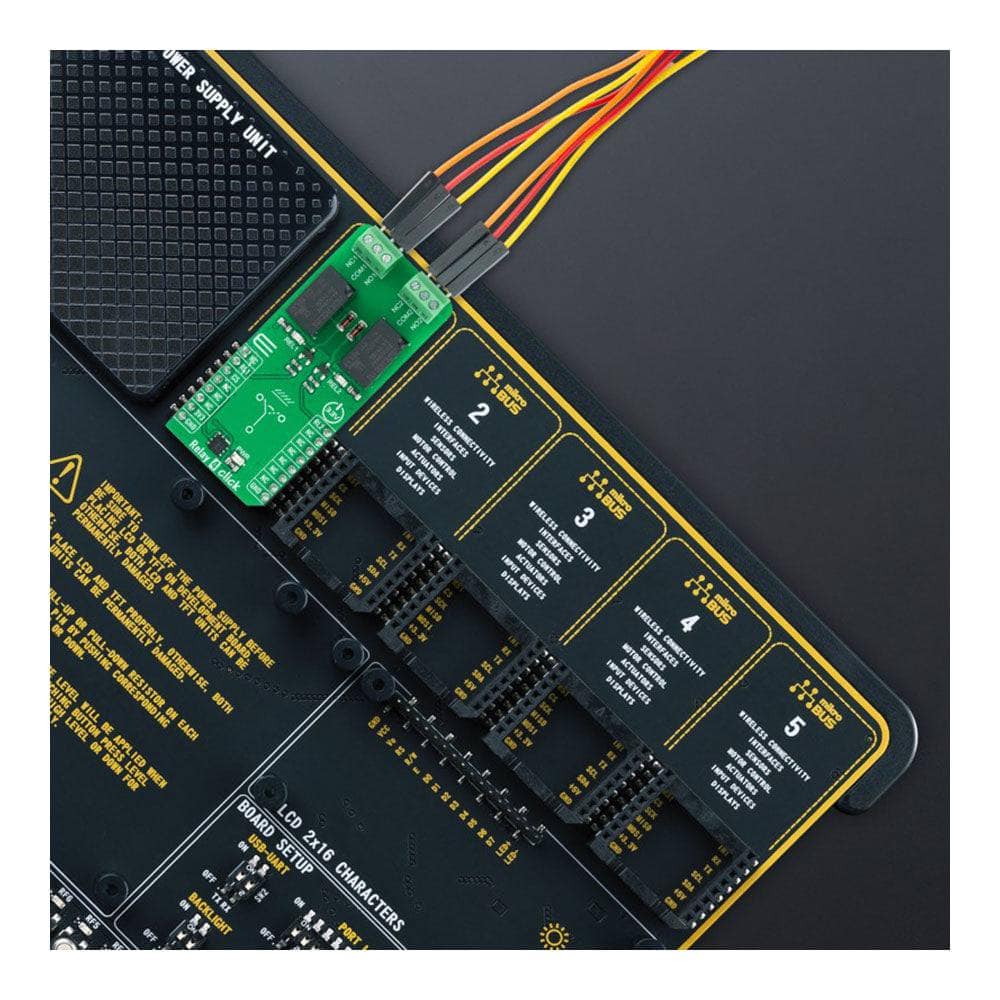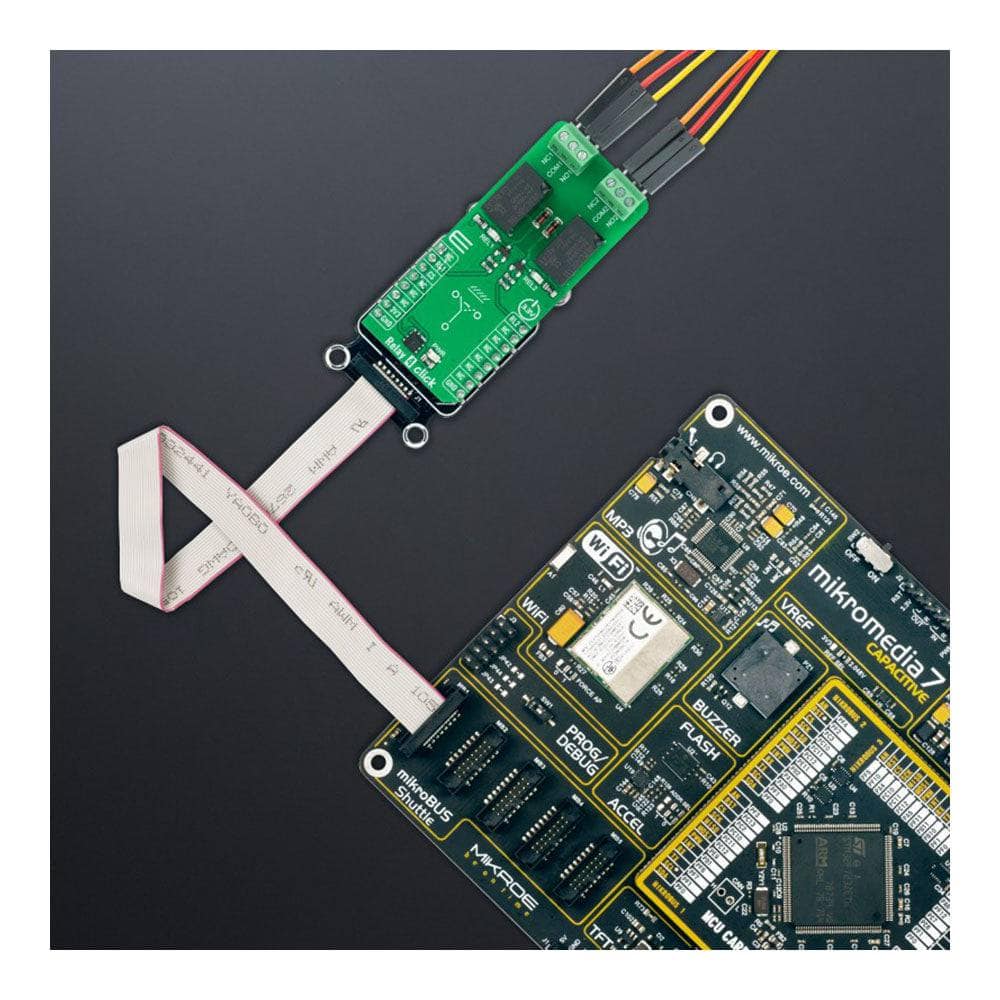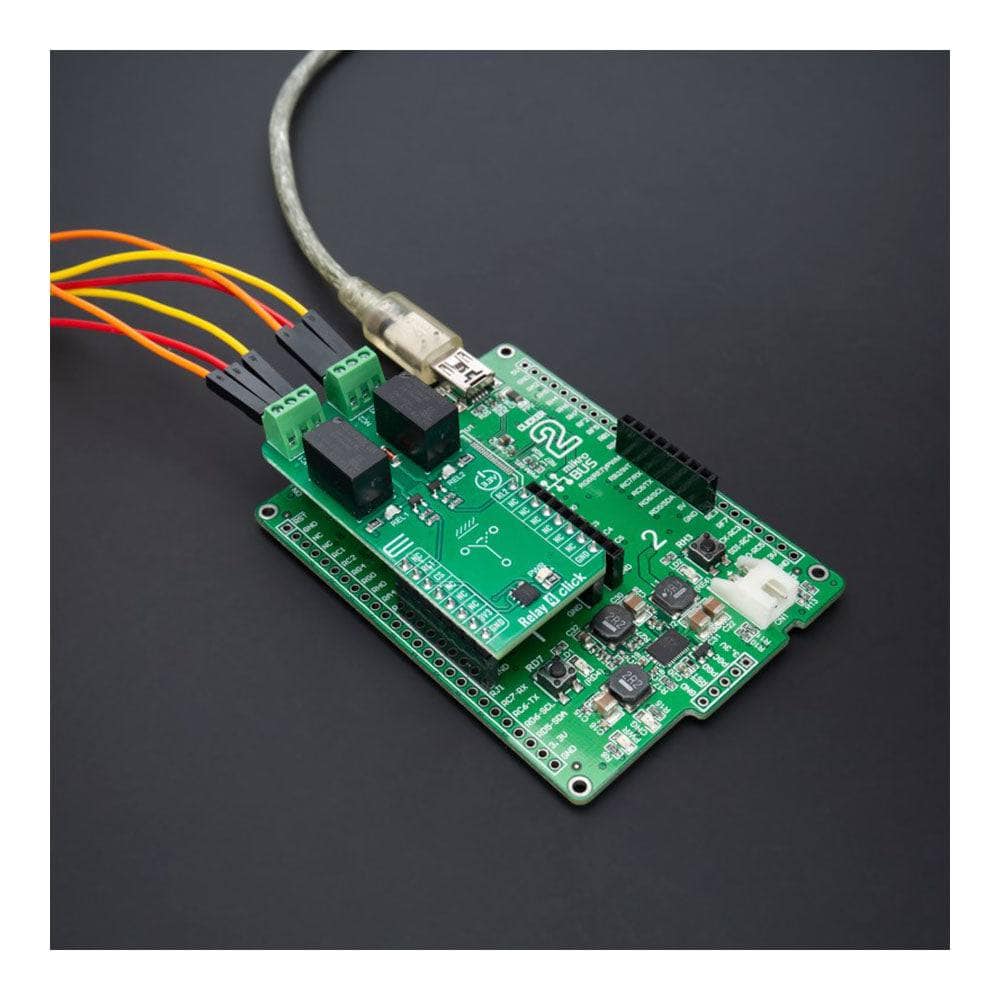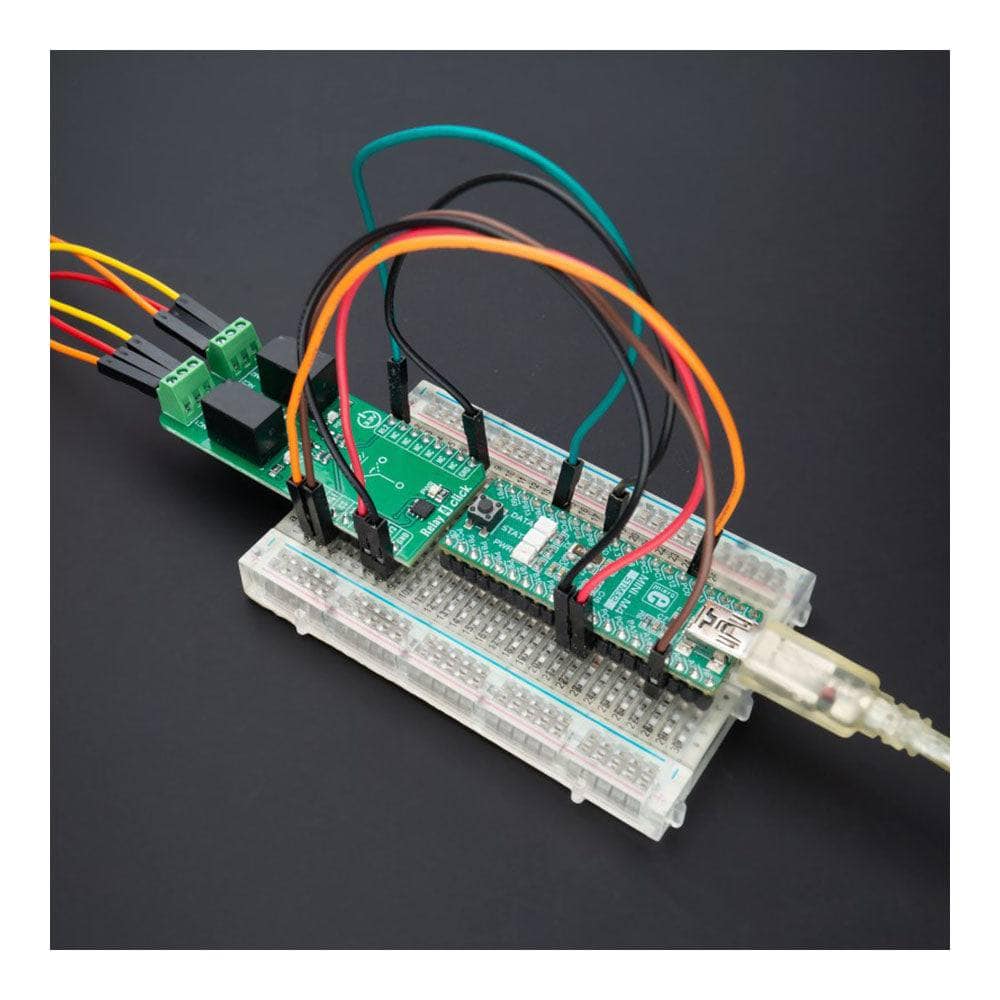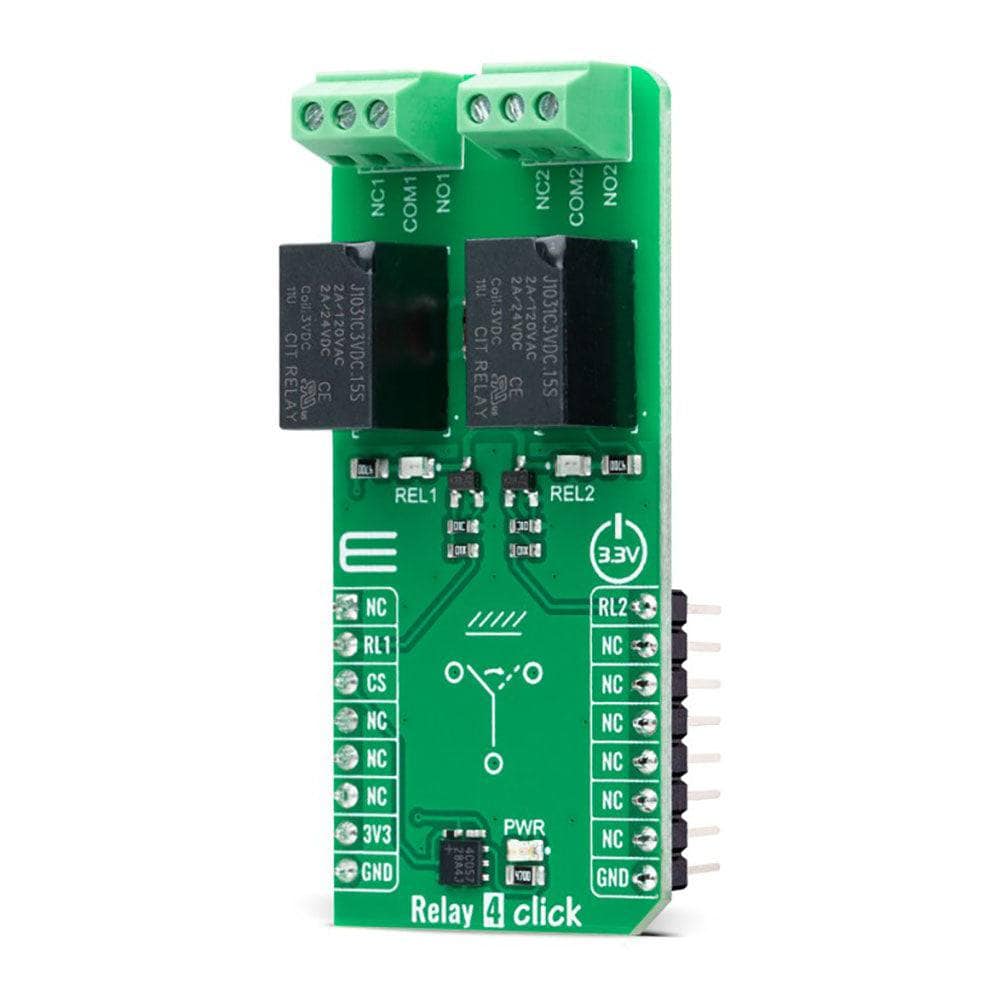
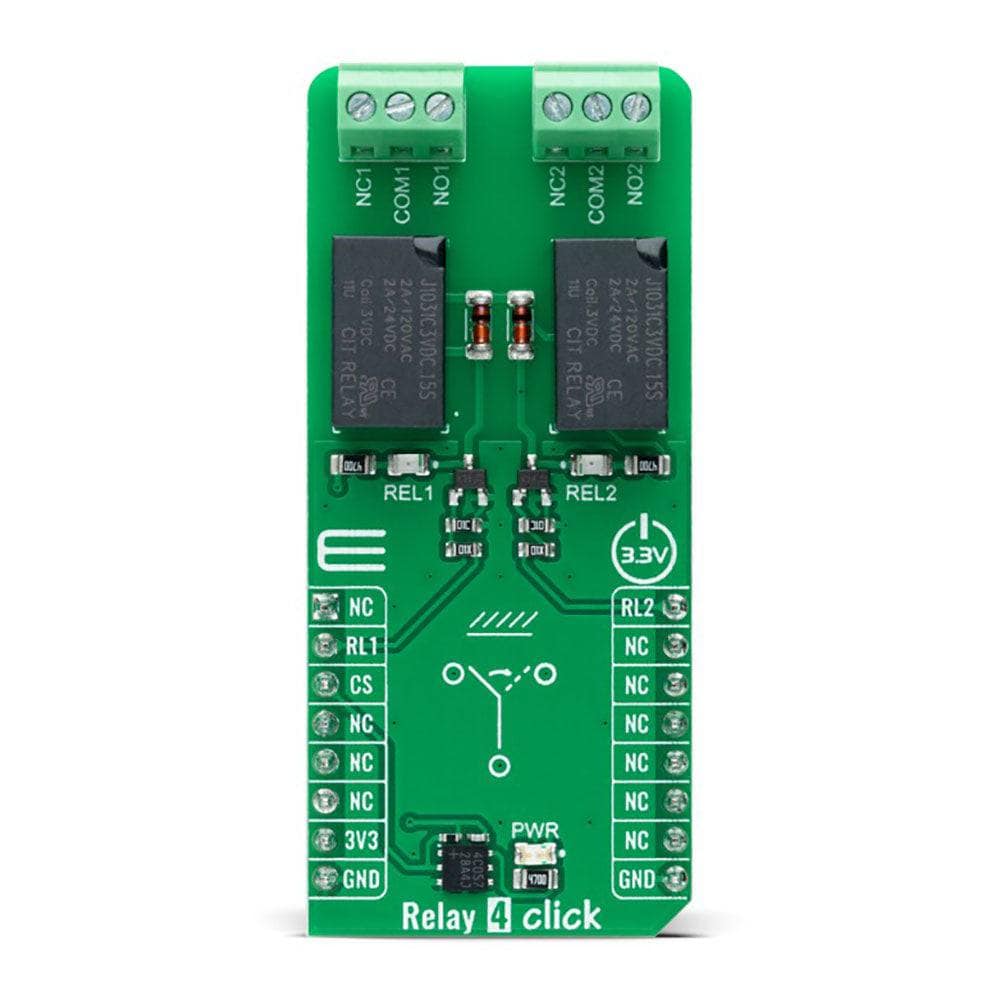
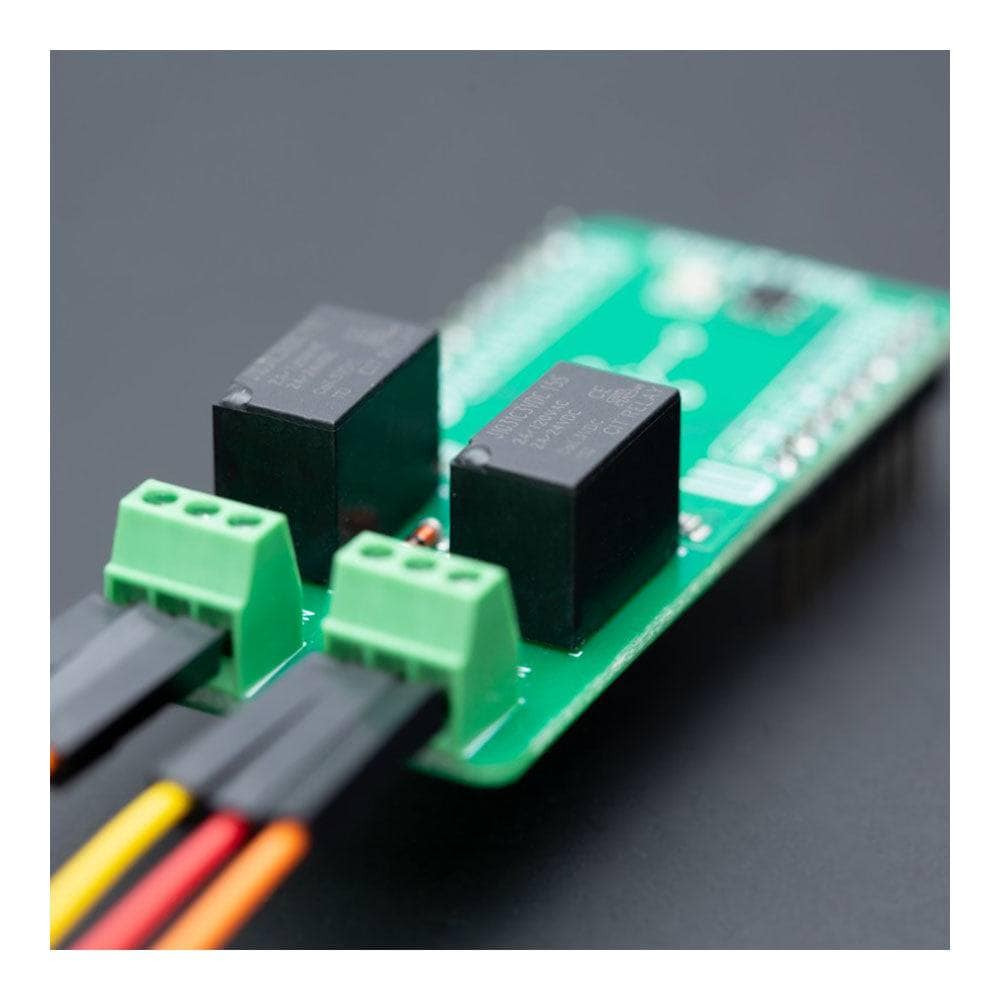
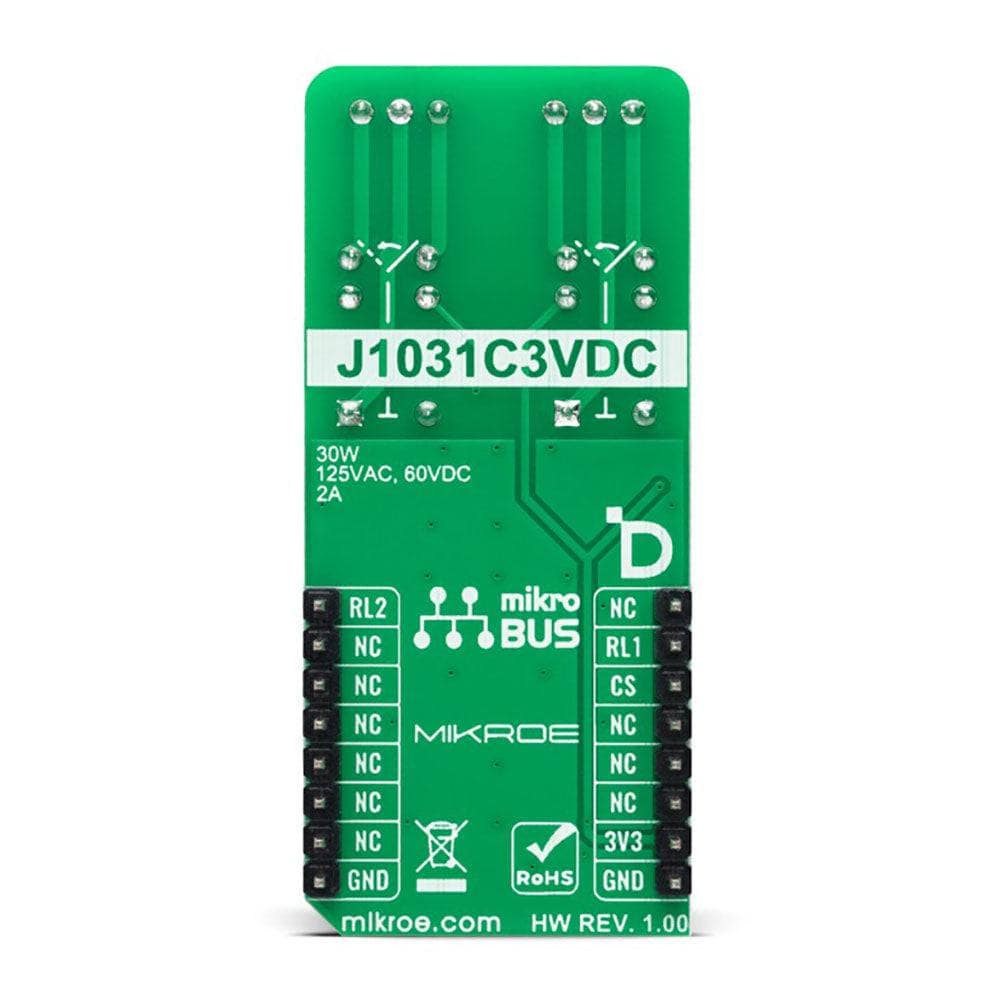
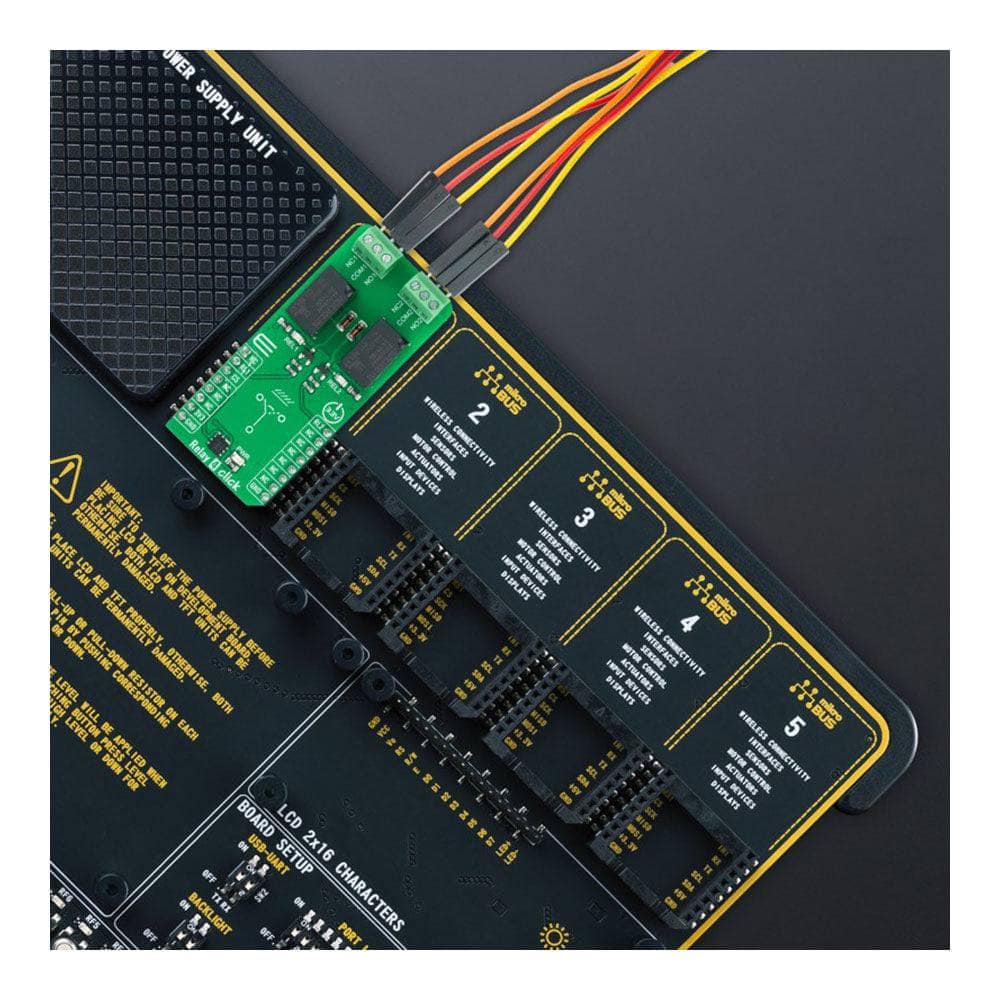
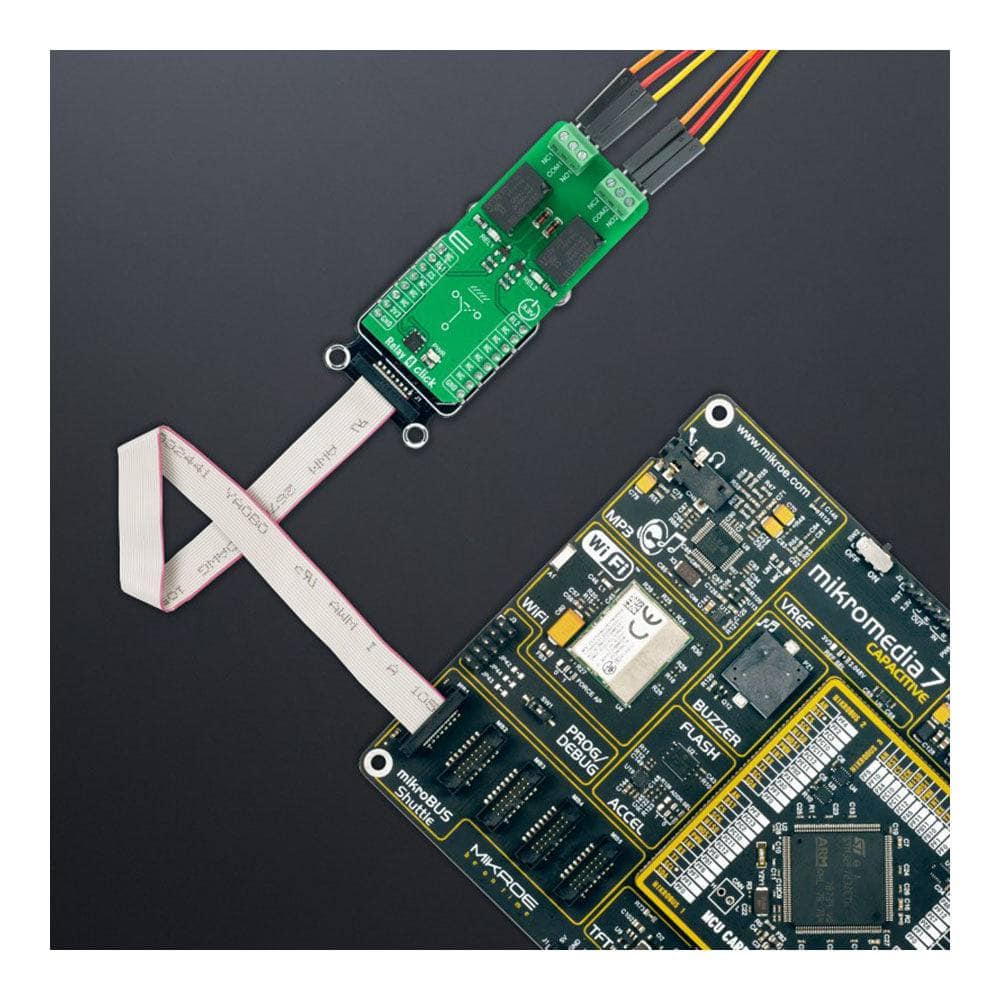

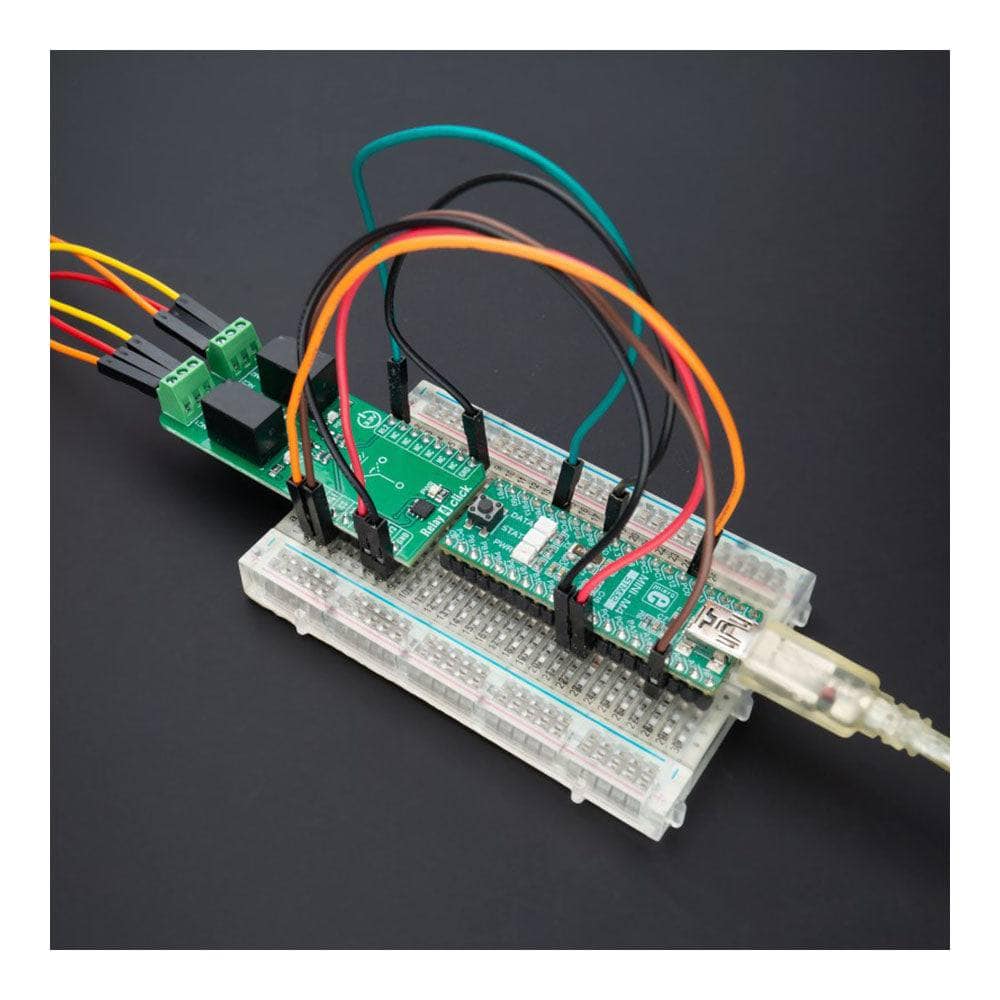
Key Features
Overview
Introducing the Relay 4 Click Board™, the compact and robust solution for controlling high-power applications. This add-on board features the J1031C3VDC, a highly sensitive and low-power consuming single-pole double-throw (SPDT) signal relay from CIT Relay and Switch. With a small and lightweight design, PC pin mounting, and a 1C contact arrangement with a coil voltage of 3VDC, this relay can handle a maximum switching voltage of 125VAC/60VDC. Measuring at just 12.5x7.5x10 millimeters (LxWxH), it's easy to integrate into any system equipped with the mikroBUS™ socket.
Plus, software development is a breeze with the included mikroSDK-compliant library and pre-tested design. Upgrade your system with the Relay 4 Click Board™ today!
Downloads
Présentation de la carte Relay 4 Click Board™ , la solution compacte et robuste pour le contrôle des applications haute puissance. Cette carte complémentaire comprend le J1031C3VDC, un relais de signal unipolaire bidirectionnel (SPDT) hautement sensible et à faible consommation d'énergie de CIT Relay and Switch. Avec une conception compacte et légère, un montage sur broche PC et une disposition de contact 1C avec une tension de bobine de 3 VCC, ce relais peut gérer une tension de commutation maximale de 125 VCA/60 VCC. Mesurant seulement 12,5 x 7,5 x 10 millimètres (L x l x H), il est facile à intégrer dans n'importe quel système équipé de la prise mikroBUS™.
De plus, le développement logiciel est un jeu d'enfant grâce à la bibliothèque compatible mikroSDK incluse et à la conception pré-testée. Mettez à niveau votre système avec le Relay 4 Click Board™ dès aujourd'hui !
| General Information | |
|---|---|
Part Number (SKU) |
MIKROE-5539
|
Manufacturer |
|
| Physical and Mechanical | |
Weight |
0.02 kg
|
| Other | |
Country of Origin |
|
HS Code Customs Tariff code
|
|
EAN |
8606027385971
|
Warranty |
|
Frequently Asked Questions
Have a Question?
Be the first to ask a question about this.

